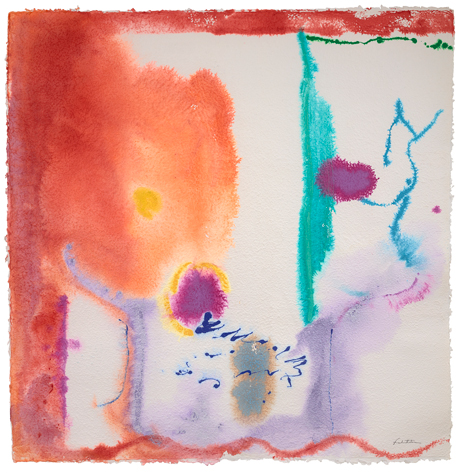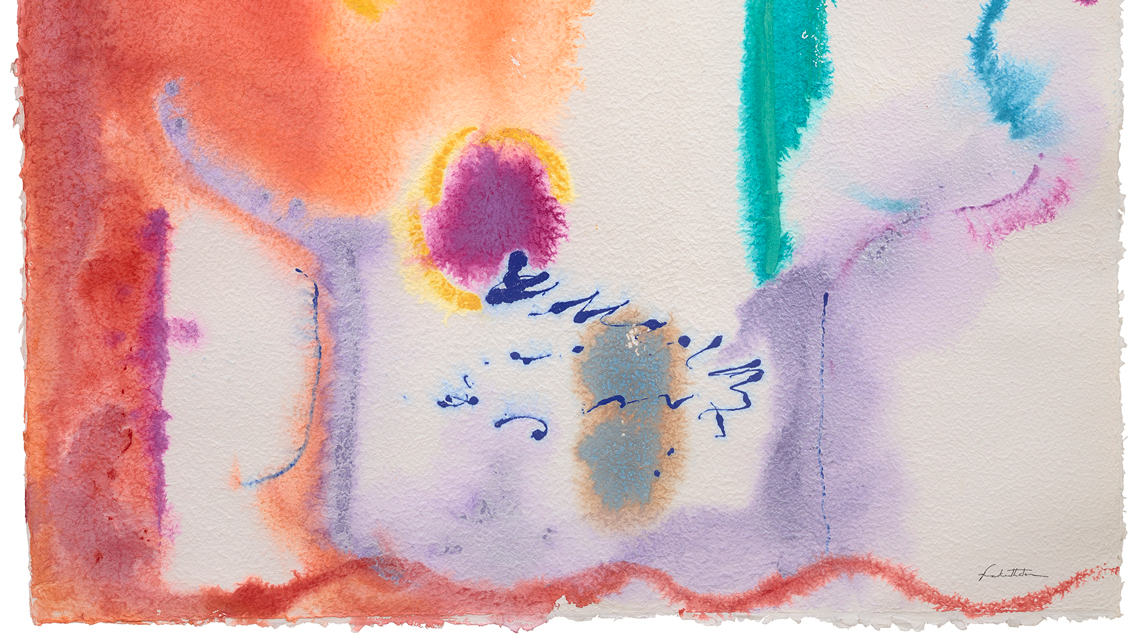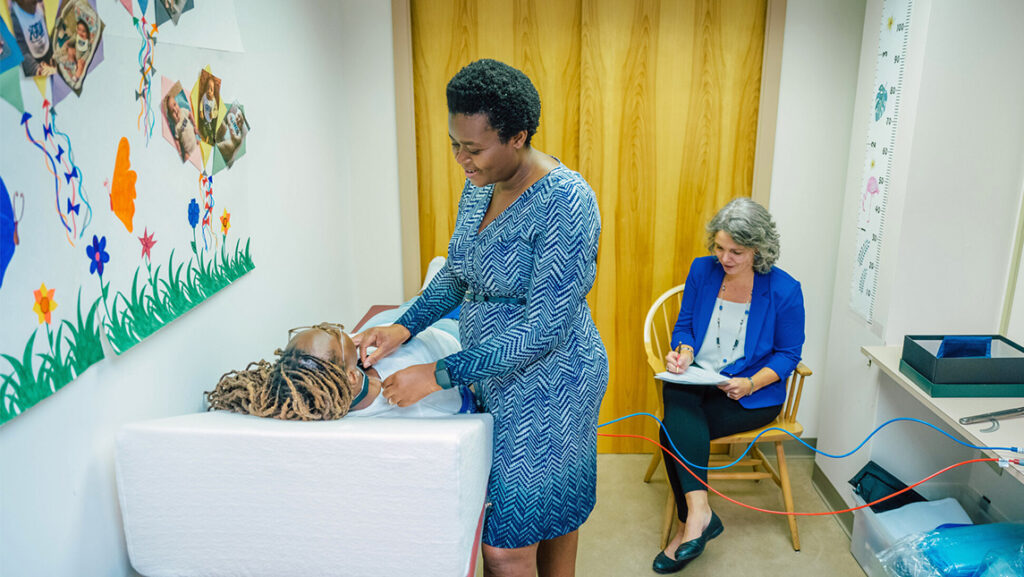
This summer, the Weatherspoon Art Museum hosts the exhibition “Helen Frankenthaler: Late Works, 1990-2003,” June 12 through August 28.
The show is curated by a former Weatherspoon curator, Douglas Dreishpoon, and there will be a virtual curator talk June 16 at 4 p.m. Register here: https://weatherspoonart.org/event-jun-16-curators-talk-dreishpoon/
Recognized as one of the great American artists of the 20th century and best known for her invention of the soak-stain technique, Helen Frankenthaler was a fearless experimenter, particularly when it came to new materials and processes. In the later stages of her life, she deployed many of the same media and instruments that had been her longtime staples: charcoal, crayon, pastel, pen, and ink, as well as acrylic paint thinned out and applied with brushes, sponges, and an array of hardware utensils (windshield wipers, basters, and scrapers). Having always painted canvases directly on the studio floor, she started using larger sheets of paper—some measuring over 6 feet—likewise laid out on the floor or on table tops for easier accessibility.
“The continuity between the late work and what came before, in content and execution, is striking: compositions that vary from dense and somber to airy and buoyant; favored figures rendered in fresh contexts; and the curious commingling of amorphic and geometric configurations distinguish Frankenthaler’s poetic abstractions. Graced with an expansive art-historical image bank and technical prowess, the seventy-something-year-old painter moved in whatever direction suited her mood and imagination,” said Douglas Dreishpoon, who is director of the Helen Frankenthaler Catalogue Raisonné project at the Helen Frankenthaler Foundation in New York City, and Chief Curator Emeritus at the Albright-Knox Art Gallery. Dreishpoon was a former curator at the Weatherspoon Art Museum in the early 1990s.
Dreishpoon’s writing has been published in numerous catalogues, magazines, and journals. Recent publications include ROBERT MANGOLD: Beyond the Line | Paintings and Project 2000–2008 (Abrams, 2009); The Long Curve: 150 Years of Visionary Collecting at the Albright-Knox Art Gallery (Skira, 2011); Giving Up One’s Mark: Helen Frankenthaler in the 1960s and 1970s (Albright-Knox Art Gallery, 2014); Nothing and Everything: Seven Artists, 1947–1962 (Hauser & Wirth, 2017), and What is Modern Sculpture? (University of California Press, forthcoming). He holds a PhD from the Graduate Center of the City University of New York.
More about Helen Frankenthaler
Helen Frankenthaler (1928–2011) is recognized among the most important American abstract painters of the 20th century, widely credited for her pivotal role in the transition from Abstract Expressionism to Color Field painting. Best known for her invention of the soak-stain technique, Frankenthaler experimented tirelessly throughout her six-decade-long career, producing a large body of work in painting, prints, works on paper, and other mediums, whose impact on contemporary art has been profound and continues to grow.
Frankenthaler had her first solo exhibition at New York’s Tibor de Nagy Gallery in 1951—the same year she was featured in the landmark exhibition 9th St. Exhibition of Paintings and Sculpture. Her distinguished career includes numerous monographic museum exhibitions at: the Jewish Museum in New York (1960); Whitney Museum of American Art (1969), which toured in Europe; Solomon R. Guggenheim Museum (a works on paper retrospective in 1985); and the Modern Art Museum of Fort Worth (1989), which had an extensive tour in the United States. Additional notable exhibitions at the National Gallery of Art, Washington, D.C. (1993) and the Museum of Contemporary Art, North Miami, FL (2003) featured her print editions and paintings on paper. She also maintained a consistent presence in major international exhibitions, including representing the United States in the 33rd Venice Biennale in 1966.
Frankenthaler also received numerous awards and accolades during her lifetime, including the National Medal of Arts in 2001. Her work is held in the collections of major museums worldwide and continues to be exhibited widely, most recently at the Metropolitan Museum of Art; Whitney Museum of American Art; National Gallery of Art, DC; and Tate Modern.
Copy provided by Weatherspoon Art Museum
Image: Helen Frankenthaler, “Beginnings”, 1994. Acrylic on paper, 78 ¾ x 77 ¾ in. Helen Frankenthaler Foundation, New York. © 2021 Helen Frankenthaler Foundation, Inc. / Artists Rights Society (ARS), New York; photo by Roz Akin, courtesy Helen Frankenthaler Foundation



